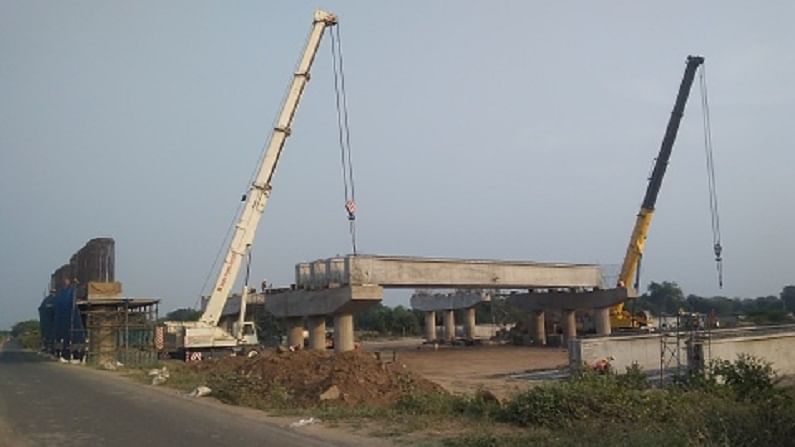Giving Gati-Shakti: India’s version of the new deal
The NIP will help augment India’s productive capacity, contribute to our overall growth and bring down the logistics costs, improving competitiveness

There are several reasons why a country grows at a particular level – and not faster. Many may in fact often wonder why an economy grows only at 6% or 7% and not at 10%. Alas, the world would have been much simpler if countries could simply choose to grow at a particular level. However, that is often not the case as countries and their growth process face numerous constraints – most of which are binding in nature.
In the case of India, one such constraint has been our inability to execute big-ticket infrastructure projects on a fast-track basis. Of course, there have been several instances where we have delivered on big infrastructure projects in record time, however, these instances have been an exception rather than the norm. This is in contrast with China which has largely managed to not just execute big projects in an expedited manner, but they have also managed to scale their ability to achieve the same across their country.
India was late to the infrastructure party as the real offtake of making roads, highways and expressways started only in the 21st century. Since then, we have realized the positive impact of public infrastructure projects, it should come as no surprise that the government is keen to accelerate the pace of execution of such projects. One of the reasons behind the delays is the fact that several departments are involved while planning and execution of such projects, and often each of these departments work in their own silos.
National Infrastructure Pipeline
The ambitious National Infrastructure Pipeline of the Indian Government has a plan to execute projects worth Rs 100 lakh crores. This by far is perhaps the most ambitious infrastructure project since independence and is crucial for building the next generation of infrastructure, be it in the form of roads, railways or ports. Execution of these projects, at a never-before scale will be a challenging task for any government. However, the success of the National Infrastructure Pipeline will depend on whether we are able to implement each of these projects within the stipulated timeframe. This is perhaps why the Prime Minister is equally focused on not just the individual projects in the pipeline but also to find a mechanism to execute each one of them in record time.
Expediating projects?
A single platform that will connect all the stakeholders in each project should help accelerate the progress, while also provide for a robust tracking mechanism. Both are essential to ensure that the pipeline is well in place as a major reboot to India’s infrastructure. An important statement by the Prime Minister pertained to how a lethargic approach towards projects led to a waste of taxpayers’ money. This was perhaps a reference to cost overruns due to delayed projects, but it also reaffirms the commitment of the government to spend the tax monies judiciously.
It is very encouraging that the government has committed itself not just to the infrastructure development plan but also to finish it in a time-bound manner. So far, the difference between India and China has been the latter’s ability to execute at a scale much better than the former. The success of NIP will illustrate that the former too has the potential to achieve the same.
The critical need for infrastructure is reflected in the fact that India continues to have significantly higher logistics costs than most of our competitors. This of course plays a major role in determining the cost structure for Indian companies – which are trying to tap into global markets. The development of multi-modal logistics is crucial to bring down the overall logistics cost in the country.
Crucial timing & employment potential
The timing of the National Infrastructure Pipeline is also crucial. One can perhaps draw analogies with respect to the Marshall Plan after the world wars – or the New Deal. For those who aren’t aware, the New Deal was a series of projects that were launched in the US between 1933 and 1939 in response to the Great Depression. The objective of the New Deal was to provide employment, restore normalcy of the banks and tighten regulations to prevent future depression. The Marshall Plan (1948) was a plan enacted by the US Congress to help reconstruct Europe after the second world war. The US provided support to its European allies to the tune of 12 billion USD to help them rebuild their countries.
The National Infrastructure Pipeline comes just in the aftermath of the pandemic, which of course had its own economic costs. A direct benefit of the NIP will be in the form of immediate jobs that it will add to the economy while the projects are being implemented. The scale and size of the overall proposal are illustrative of the fact that we should see large-scale employment opportunities for unskilled workers over the next couple of years.
Additionally, the NIP will also help augment India’s productive capacity, contribute to our overall growth and help bring down the logistics costs thereby improving our competitiveness. Therefore, the spill-over benefits of these projects on employment creation via improvement in the overall level of economic activity.
It is therefore only fair to ask whether Gati Shakti is India’s New Deal? Perhaps yes, but only time will tell.